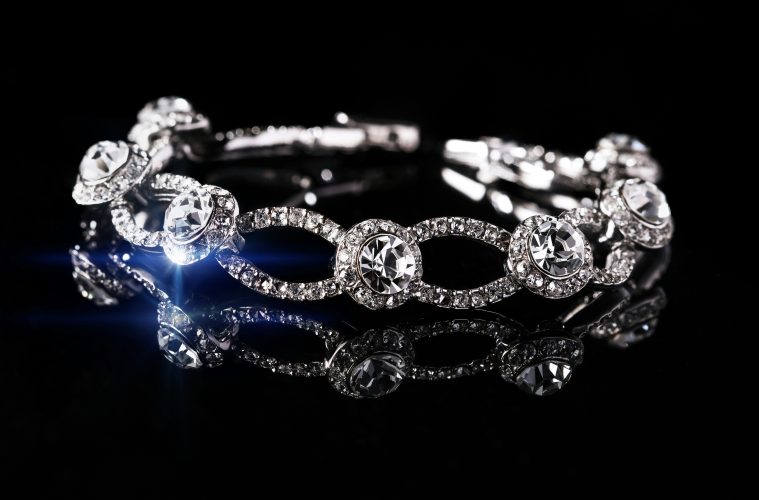Perhaps, nothing says luxury with clearer, fairer, and more enduring tones than a high-quality diamond ring, necklace, bracelet, or broach.
If you’re asking yourself, “How can I sell my diamond for a fair price?,” you need to become familiar with these 5 basic features of what makes a diamond both precious and unique.
1. Shape
Different diamond shapes tend to serve different purposes and to bring out different aspects of a diamond’s beauty with greater impact. Plus, everyone has their own personal shape preference.
A round shape is the most basic, and it also tends to bring out the brilliance of a diamond most spectacularly. Round diamonds also fit virtually any ring setting and are too classic to ever go out of style.
While around 75% of diamonds are round, princess cut diamonds are the most popular among “fancy shape diamonds” and have been since they were introduced in the 1980s. Princess cut is also a little less costly than round cut because less material has to be shaved off from the original rough stone.
Other diamond shapes to consider include: marquise, oval, pear shaped, cushion cut, and heart shaped.
2. Carat Weight
Don’t confuse “karat” with “carat,” as the two are completely unrelated. The former has to do with the purity of gold, while the latter refers to a weight metric traditionally used with diamonds.
Currently, a one-carat diamond costs around $6,000, and for the price of two and three carat stones (also very popular) – just do the multiplication. However, “off-size” and “oversize” diamonds, where there is a slight deviation in weight (like .9 carats or 2.1 carats) can see a big impact on the price per carat.
While carat refers to weight, it also tends to correspond to a particular size of diamond. And the shape of a diamond can affect how big it looks. A marquise cut diamond can look fairly large even at .75 carats, for example, due to the length of its cut.
3. Cut Grade
Sometimes, diamond sellers will use their own cut grading system, which follow their own set of terms and definitions. That makes it difficult to compare the cut quality, so look for a GIA diamond cut grading if possible.
Note that cut grade, or just “cut,” here does not refer to shape but instead to things like symmetry, proportion, and polish. The more skillfully a diamond is cut, the more luminous it will be – and the more valuable.
Don’t underestimate the importance of cut grade. Even an otherwise perfect diamond will appear comparatively dull if it is poorly cut. For the best sparkle, look for a GIA cut grade in the range of Very Good to Excellent.
4. Color
Diamonds are essentially thought of as colorless, but gemologists know that there are slight color variations among stones. These differences are very subtle and are hard to detect unless a stone is several color grades up or down from another one.
Color is graded on an alphabetic scale, where A is the purest while B and down have more and more color detectable. Color is ascertained against a white background in a controlled environment and is hard to see once a stone is set.
The larger the stone, the easier it is to detect the color. Thus, a grade of G or H is recommended for one-carat diamonds, while a grade of I or J is sufficient for those less than a carat. Also, note that fluorescent diamonds sell for around 10% less than non-fluorescent ones.
5. Clarity
Clarity refers to the lack of inclusions and internal imperfections in a diamond. In smaller stones, it’s not readily noticeable. But the larger the stone, the more visible these inclusions become. Also, certain shapes, like brilliant cut, hide imperfections better than others.
A VVS2 clarity grade or better is only present in the top 10% of diamonds. VS1 to VS2 will appear flawless to the unaided eye, and SI1 or SI2 clarity is still good in diamonds of one carat or less.
A Word on Diamond Certificates
There are actually a number of different diamond grading certificates that lead to somewhat different valuations of the same stone. For example:
- GIA tends to be the “strictest” of diamond lab certifications.
- IGI is a bit “looser” on color and clarity than GIA.
- AGS is about as strict as GIA but has its own 9-point system.
Also, certificates by jewelers are often wrong because many of them are using an imprecise method that is just a ballpark estimate. And they may be using the same or similar terms as do grading labs but not with the same meaning. Plus, note that valuations done for the purpose of diamond insurance or taxation are often different than those done for actually selling the diamond.
A good alternative to sending a diamond to an actual GIA or other organizational lab or to a jeweler is to get it rated by a professional lab of an online diamond seller like I Value Lab. But make sure you clean the diamond first and include high-quality photographs before submitting online data – it will increase the chances of selling dramatically.
Understanding the major features of how diamonds are priced and what are your certification options will put you in a better position to sell your diamond online, where you can likely get two to four times the sale price for it.

